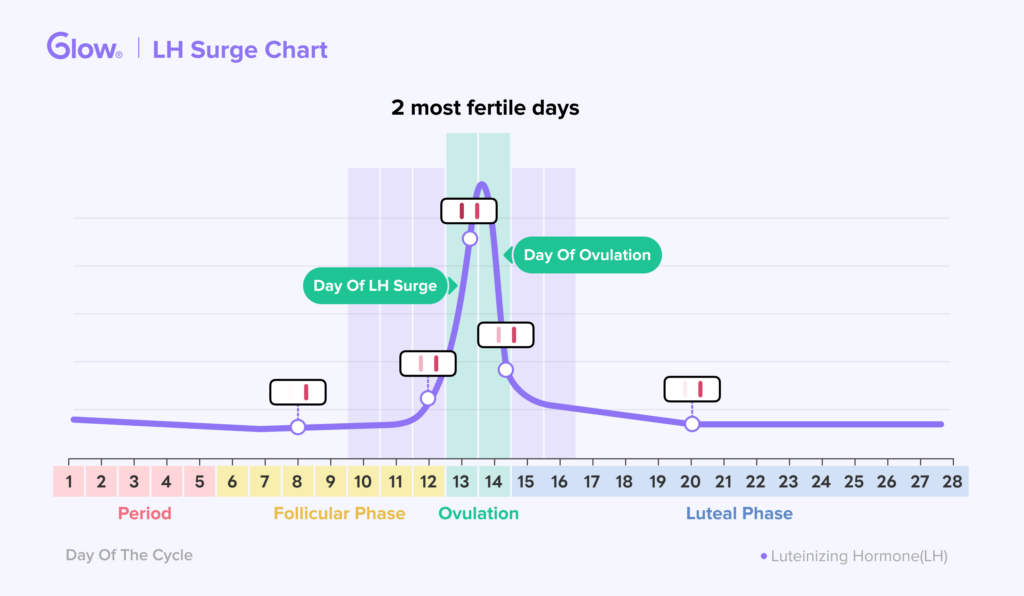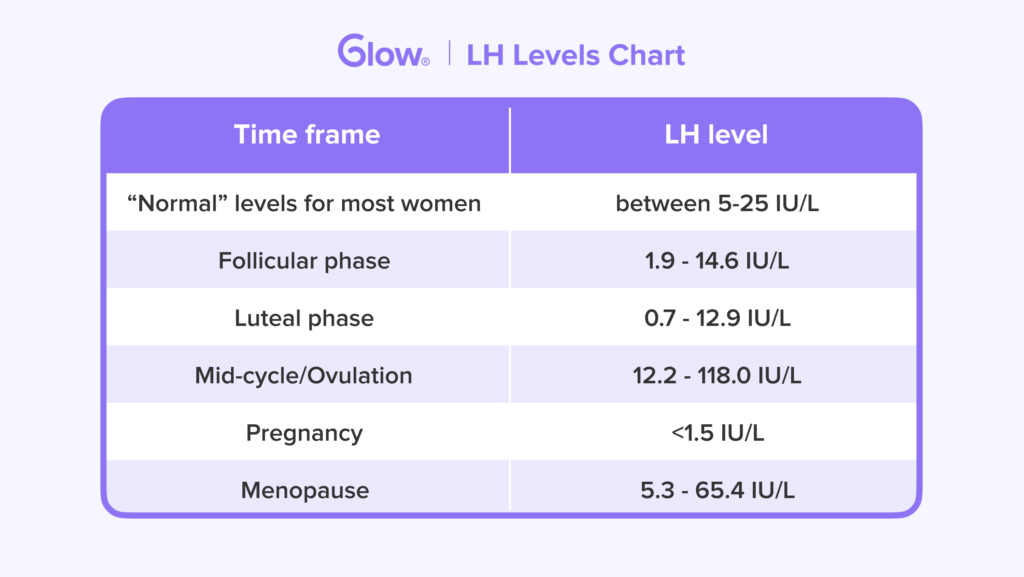Luteinizing Hormone (LH) is a crucial player in the intricate hormonal ballet that orchestrates reproductive health. Although often overshadowed by its more well-known counterparts like estrogen and testosterone, LH is pivotal in regulating key processes such as ovulation in women and testosterone production in men. Understanding LH levels can offer invaluable insights into one’s reproductive health, fertility status, and even overall well-being.
Maintaining appropriate LH levels is essential for reproductive health. In women, proper LH levels are necessary for a regular menstrual cycle and successful ovulation, which are critical for fertility. In men, LH is essential for producing testosterone, which directly influences sperm production and overall reproductive health. Abnormal LH levels can lead to various health issues, including infertility, irregular menstrual cycles, and hormonal imbalances.
One of the most practical applications of monitoring LH levels is through ovulation tests, which are often used by women trying to conceive. These tests detect the surge in LH that precedes ovulation, providing a valuable window for timing intercourse. However, the significance of LH isn’t limited to those trying to start a family; it can also be an indicator of broader hormonal health.
Normal LH Levels Throughout the Life Stages in Women
Understanding what constitutes ‘normal’ LH levels in women requires an appreciation of the hormonal fluctuations that occur throughout different life stages. From childhood through menopause, LH levels vary significantly, reflecting the dynamic nature of the female reproductive system.
Childhood
In pre-pubertal girls, LH levels are relatively low. The ovaries are inactive, and the hormonal regulation by the hypothalamus and pituitary gland is minimal. LH, along with other hormones, begins to rise as a girl approaches puberty.
Puberty
Puberty marks the beginning of significant hormonal changes. LH levels start to increase, stimulating the ovaries to produce estrogen. This hormonal surge triggers the onset of secondary sexual characteristics, such as breast development and the start of menstrual periods.
Adulthood
During a woman’s reproductive years, LH levels exhibit a well-defined pattern that aligns with the menstrual cycle. The typical cycle can be divided into three main phases:

- Follicular Phase: This phase begins on the first day of menstruation and lasts until ovulation. LH levels are relatively low but gradually increase along with FSH to stimulate the growth of ovarian follicles.
- Ovulation: The follicular phase culminates in a sharp increase in LH levels, known as the LH surge. This surge typically occurs around the middle of the menstrual cycle and triggers the release of a mature egg from the ovary, a process known as ovulation. The LH surge is a critical indicator for women trying to conceive, as it signifies the most fertile period.
- Luteal Phase: Following ovulation, LH levels decrease. The corpus luteum, the remnant of the follicle that released the egg, produces progesterone and some estrogen to prepare the uterine lining for a potential pregnancy. If fertilization does not occur, LH and other hormone levels decline, leading to menstruation.
Menopause
As women approach menopause, typically around their late 40s to early 50s, the ovarian reserve diminishes, and menstrual cycles become irregular. During perimenopause, the transitional period before menopause, LH levels can be erratic. Eventually, after menopause, the ovaries cease functioning, leading to a significant decrease in estrogen production. Consequently, LH levels can be elevated as there is no negative feedback from ovarian hormones to inhibit its release.
Normal LH levels can vary based on age, sex, and the phase of the menstrual cycle. Here are some general ranges:

It’s important to note that these ranges can vary slightly depending on the laboratory and the method used for testing.
LH Surge and its Significance
The LH surge refers to a sudden, dramatic rise in LH levels that typically occurs mid-cycle in women, around 24-36 hours before ovulation. This surge is crucial for triggering the release of a mature egg from
Timing and Detection:
- The LH surge typically occurs midway through a woman’s menstrual cycle, usually around day 14 of a 28-day cycle.
- Ovulation test strips and blood tests are commonly used to detect the surge, indicating the most fertile window for conception.
Importance for Fertility:
- Identifying the LH surge helps women understand their ovulation cycle, improving their chances of conceiving.
- Fertility treatments often monitor LH levels closely to optimize timing for interventions such as insemination or egg retrieval.
Understanding the LH surge is essential for predicting ovulation and managing fertility, making it an important aspect of reproductive health.
Abnormal LH Levels and Their Implications
High LH Levels
- Potential Causes: Elevated LH levels can be caused by conditions like Polycystic Ovary Syndrome (PCOS), menopause, or primary ovarian insufficiency.
- Possible Symptoms: Women may experience irregular periods, absence of menstruation (amenorrhea), and infertility. In men, high LH levels may indicate testicular failure or other underlying issues.
Low LH Levels
- Potential Causes: Low LH levels can result from hypogonadism, pituitary gland disorders, chronic stress, or severe weight loss due to eating disorders such as anorexia.
- Possible Symptoms: Women might have missed periods, difficulty conceiving, and in severe cases, a complete halt in menstrual cycles. Men may experience reduced sperm count, decreased libido, and overall decreased levels of testosterone.
Recognizing abnormal LH levels through appropriate testing is crucial for diagnosing underlying health issues and informing subsequent treatment plans to restore hormonal balance and improve reproductive health.
Monitoring LH Levels
LH levels can be monitored through blood tests or urine tests. Blood tests, typically conducted in a clinical setting, provide precise measurements of LH levels at different points in the menstrual cycle. On the other hand, urine tests, commonly used in ovulation predictor kits (OPKs), detect the presence of LH and help predict the timing of ovulation. The latter method is more convenient and user-friendly. For more information about OPKs, refer to our guide Ovulation Test 101.
Factors Affecting LH Levels
Several factors can influence LH levels, including:
- Age: LH levels can change with age, particularly around puberty and menopause.
- Hormonal Disorders: Conditions such as polycystic ovary syndrome (PCOS) or hypothalamic amenorrhea can affect LH levels.
- Medications: Certain medications, including hormonal contraceptives and fertility treatments, can alter LH levels.
- Health Conditions: Thyroid disorders, pituitary gland disorders, and chronic illnesses can impact LH production and regulation.
When to Consult a Healthcare Provider
If you experience irregular menstrual cycles, difficulty conceiving, or symptoms of hormonal imbalances (such as unexplained weight gain, hair loss, or severe acne), it may be helpful to consult a healthcare provider. They can recommend appropriate tests to evaluate your LH levels and overall hormonal health.
LH levels and surges are key indicators of reproductive health and fertility. Understanding what constitutes ‘normal’ LH levels and recognizing the significance of LH surges can empower individuals to monitor their menstrual health and seek medical advice when necessary. Regular monitoring and a good understanding of hormonal patterns can contribute to better reproductive health and well-being.




